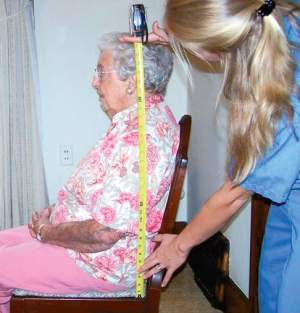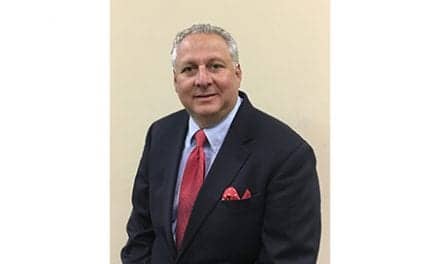
“One size fits all” takes a back seat to adjustability.
For rehabilitation patients who are required to spend time in a wheelchair, comfort has long been a top priority. Until recently, however, the high incidence of inconveniences such as repetitive stress injury, sores, and instability has provided a challenge for both wheelchair users and the therapists who assess their needs. In recent years, manufacturers have introduced adjustments to the custom seating industry to tackle these frustrations. Solutions including combined cushion materials and more efficient seating adjustments have led to increased efficiency and provided wheelchair-bound individuals with a more comfortable chair.
SLOWLY BUT SURELY
Barbara Sweet-Michaels, OTR, ATP, an occupational therapist and seating and mobility specialist at Helen Hayes Hospital Center for Rehabilitation Technology, West Haverstraw, NY, says there has been a gradual change in wheelchair design and product material, rather than a revolution in products.
“Despite funding, which has been reorganized based on Medicare guidelines, the products continue to evolve, and they get better,” Sweet-Michaels says. Manufacturers have begun to combine seat cushion materials, such as air in the back and foam in the front, to try to give patients the best of what both materials have to offer. Other resources include a new foam called reticulated foam, which is more open-celled and allows air to pass through, as well as water-resistant material for incontinent clients, and an antimicrobial foam.
The transition in chair design that had been years in the making was greeted with open arms by wheelchair users and therapists alike, says Kirsten Davin, OTD, OTR/L, ATP, SMS, owner of home health-based private practice Escape Mobility Solutions LLC, Pleasant Plains, Ill. One of the most dominant issues therapists have come across, Davin says, is the speed at which custom fabricated seating would become obsolete as a result of clients outgrowing their systems. Now, more highly adjustable seating has increased the lifespan of a client’s custom product, she says.
Using a single medium for a seating solution creates a persistent problem, Davin says, because each material comes with individual benefits and liabilities. Air cushions, for example, are noted for their pressure-relieving qualities, but many styles are not conducive to patients who have low tone, poor trunk control, or poor sitting balance. Thus, cushion maintenance can be an issue. A foam cushion, on the other hand, is usually selected for its decreased maintenance and better stability, but it may not provide the pressure relief a client requires.
The combination of these mediums, says Mary Shea, MA, OTR, ATP, clinic manager of outpatient wheelchair services at Kessler Institute for Rehabilitation, West Orange, NJ, now provides therapists with the ability to give clients both sufficient pressure distribution and pelvic and lower extremity alignment. This is essential to maximize the client’s stability in the wheelchair, as well as increase independence and safety when functioning at the wheelchair level, Shea says.
THEN AND NOW
Davin recalls a client she worked with nearly 10 years ago who had sustained a 90% total body surface area burn as the result of a suicide attempt. The man had experienced multiple soft tissue contractures and heterotopic ossification, as well as fixed deformities at almost every joint. He had also experienced several stage 3 and stage 4 decubitus ulcers which Davin attributes to a combination of the client’s thin frame, poor seating and positioning, and lack of funding.
Back then, Davin says, it was difficult to create a custom seating system for this particular patient because of his specific needs. With today’s mixed medium approach, however, Davin says her patient could have been easily fitted with a custom seating system that could accommodate his deformities, asymmetries, and contractures while providing pressure relief for areas that are most problematic.
“Essentially, it is imperative that we, as therapists, provide our clients with the stability, foundation, and support they require within a seating system, while attempting to minimize or reduce the presence of friction and shear forces as much as possible to prevent skin breakdown,” Davin says.
One cushion currently on the market is made of a medium-firm density, which provides not only a firm foundation on which a patient’s femurs can rest, but also a solid foundation on which to place the board for transfer. Davin points out one advantage of this design is that near the rear of the cushion, within the seat well, are multiple air cells that create a pressure-relieving seat.
Other cushion designs include a foam/fluid combination or a foam/air combination, depending on what the client and therapist prefer. Davin describes these designs as relatively lightweight, weighing only 4.5 pounds with a fluid insert and 2.9 pounds with an air insert instead of the 6 or 7 pounds of gel cushion previously used.
According to Sweet-Michaels, in the past 4 years or so, she has seen cushions on the market become more contoured. This, she says, is an effort to try to get more support from the tissue surrounding the weight-bearing bones. The cushions also come around the sides of the thighs to try to maintain the alignment of the femur, provide an effective weight-bearing surface, and distribute the pressure over the broadest area possible.
THE CUSTOMIZATION PROCESS
In order to determine the best customized combination of seating and mobility products, Sweet-Michaels says therapists must perform a thorough evaluation before ordering the chair. The pelvis is of the utmost importance in this evaluation, Davin adds, since it is the key point of control and the foundation for the individual. A minor adjustment at the pelvis will often mean great changes to the trunk, cervical region, and extremities.
According to Davin, pressure mapping can play a key role in the assessment and evaluation process when ordering a customized wheelchair. It may also help the therapist gain a better understanding of the client’s presentation, not only about the current cushion or seating system, but also to help select or create a new system.
Davin also points out pressure mapping may frequently be more beneficial as a tool to determine what should not be used rather than what should be used. It may not reveal a strong indicator of what will work, she says, but pressure mapping can help to eliminate options that may not serve the client well. Furthermore, Davin says, while therapists cannot remove pressure from an individual, pressure mapping can be used as a guide to determine how pressure can be redistributed to best suit the client.
“Pressure mapping is also a valuable tool to use within the client education realm,” Davin explains. “When educating a client on the performance of manual pressure shifts or the use of tilt systems, etc to perform pressure shifts, a pressure mapping system can give them immediate and accurate feedback about how successful the individual’s pressure shifts are.”
The downside of purchasing a pressure mapping system to use for evaluations, Davin notes, is the cost and overhead of the units, which some facilities may consider too costly.
LIMITATIONS
At Helen Hayes Hospital, Sweet-Michaels says physical evaluations are begun in supine using a range of motion assessment. Therapists look for range of motion limitations of the hips, knees, and ankles, as well as for spinal flexibility and pelvic symmetry. The clinic also uses a seating simulator, which is a chair with a solid seat and back that is able to tilt backward. This provides the support the therapist needs to determine the client’s most functional sitting position and anatomical measurements. Seating ranges are based on range-of-motion limitations and physical abilities, Sweet-Michaels says.
Once the patient has been seated upright in wthe seating simulator, the therapists can determine what mobility base and seating products are needed based on the evaluation.
“The customization ends up being a combination of all of the information that’s gathered concerning the patient and then an analysis of all the product materials that are available,” Sweet-Michaels says. Manufacturers now offer numerous wheelchair styles and seating products so there is no more “one size fits all,” she adds.
Sweet-Michaels says manufacturers are willing to modify products already on the market, by doing adjustments such as raising the cushion up an inch or making it wider, or creating a cushion that is shorter on one side than the other to accommodate a patient whose legs are not the same length. She is currently working with one cushion manufacturer to design a cushion that will remove pressure from a decubitus ulcer. Removing the air cells underneath the sore provides a better chance of healing, Sweet-Michaels says.
GETTING THE COVERAGE
With custom seating updates now available come the difficulties of receiving coverage for every upgraded addition a patient might need. Medicare has assigned codes to wheelchair and seating products, and Sweet-Michaels points out that therapists must fit the patient’s diagnosis or disability to the codes in order to figure out what Medicare will and will not pay for. The funding can move forward only after the therapist has provided a letter of necessity to support the medical and functional need of each expenditure.
“They approve the chair and not the wheels. They approve the chair and not the back,” Sweet-Michaels explains. Items such as clothing guards, high performance wheels, and titanium wheelchairs are dubbed “convenience items,” which Medicare does not cover. Sweet-Michaels says that some private insurance companies also have labeled anything Medicare does not cover as a convenience item.
“The name ‘convenience item’ is a judgmental term, I think, to apply to a disabled community that needs equipment,” Sweet-Michaels says. She emphasizes that this is a community where high-performing equipment is needed.
Shea has faced her own problems with Medicare coverage. Medicare does not support funding for lightweight solid seat inserts, which she says are important on manual wheelchairs to facilitate optimal pelvic positioning. Other products not funded by Medicare include some of the power equipment used outdoors, even though it may be equipment that is better for community integration.
Despite the potential roadblocks that must be overcome to obtain Medicare coverage, therapists and manufacturers have been able to work together to create improvements for customized wheelchairs. The emergence of mixed medium cushions has widened the field and given greater opportunity to provide comfort for the user. And thanks to technology such as pressure mapping and seating simulators, therapists are better equipped than ever to fit custom seating solutions to even the most demanding needs of a patient.
Leah Bigelow is an associate editor for Rehab Management. For more information, contact .





